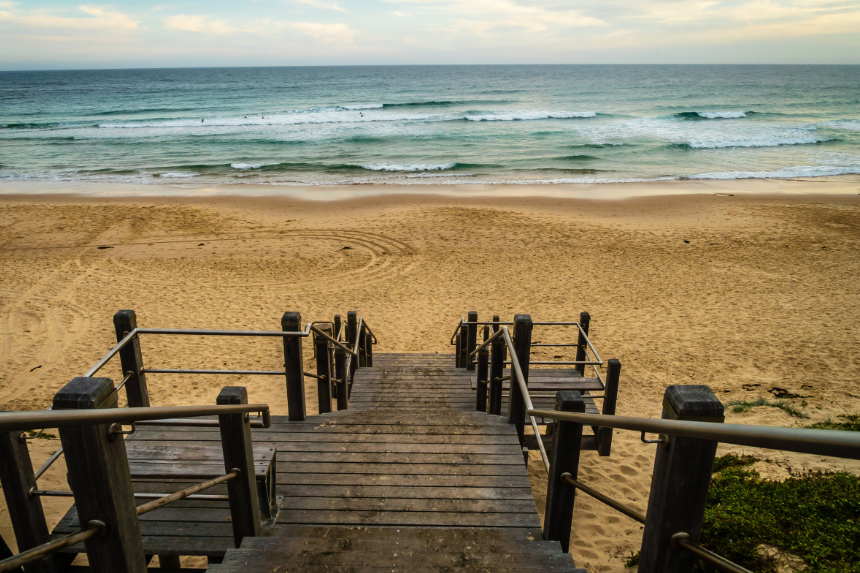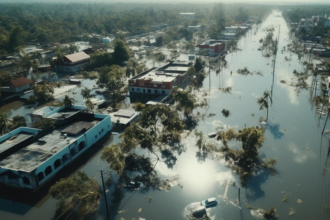Over the Easter weekend, Australia was rocked by a series of tragic drownings, known as the Easter drownings, which claimed the lives of seven individuals. This tragic loss of life was primarily concentrated in New South Wales, a state famous for its stunning yet dangerous coastline. Easter drownings are an unfortunate reality during the holiday period, as people flock to the beach to enjoy the holiday, but this year, the combination of strong ocean swells, high temperatures, and hazardous surf conditions led to an unusually high number of fatalities.
The Devastating Impact of Easter Drownings
The Easter drownings that took place this year are considered among the worst on record, according to Steven Pearce, the CEO of Surf Life Saving New South Wales. He described the situation as “horrendous,” particularly during a holiday that is meant to bring joy and reflection. The statistics are startling, with several people being swept into the ocean by powerful swells, while others were trapped between rocks at the shoreline. Pearce noted that this was the worst spate of drownings in New South Wales during an Easter weekend.
In many of the cases, the Easter drownings were caused by the combination of high surf and human error. Swimmers and rock fishermen, often unfamiliar with the strength of the tides, found themselves in dangerous situations. The emotional toll on the families and loved ones of the victims is immeasurable, and it serves as a tragic reminder of the power and unpredictability of the ocean.
One of the most heart-wrenching incidents occurred at South West Rocks, located approximately 400 kilometres north of Sydney. A nine-year-old boy became trapped between rocks and tragically lost his life despite the valiant efforts of emergency responders. Although rescuers worked tirelessly to retrieve the boy, he was declared dead at the scene. This particular incident is one of the most devastating of the Easter drownings that took place over the weekend. The boy’s death highlights the hidden dangers of rock pools and the necessity of staying cautious around rocks, even if the water appears calm.
The Tragedy at Wattamolla Beach
Earlier on Sunday, another tragedy unfolded at Wattamolla Beach, south of Sydney. A helicopter spotted a father and his 14-year-old son floating in the water, struggling to stay afloat. The helicopter crew acted quickly, and the boy was successfully resuscitated, but the father was not as fortunate. He was pronounced dead shortly after being pulled from the water. This heartbreaking incident underscores the danger of the ocean and the importance of monitoring one’s surroundings, particularly when strong waves and unpredictable currents are present. The father’s death, along with the boy’s narrow escape, is a stark reminder of the risks inherent in beach activities.
Wattamolla Beach, like many others along Australia’s coastline, can be a hazardous place for swimmers. Beachgoers need to recognise the potential dangers of even seemingly calm waters, as the ocean’s currents can change quickly and become overwhelming. In this case, the father’s decision to enter the water may have seemed safe at first, but the strong waves soon became too much for him to handle, resulting in tragedy.
The Rise in Easter Drownings: What Caused the Spike?
Authorities believe that the spike in Easter drownings was largely the result of a “perfect storm” of circumstances. High temperatures over the holiday weekend drew large crowds to the beaches, where the risk of drowning was heightened by dangerous ocean swells. These swells, caused by a combination of high tides and strong winds, proved to be more powerful than expected, leading to several tragic accidents.
In addition to the hazardous surf, many people were caught off guard by the strength of the waves, especially those who ventured out on rocks or in shallow areas. The Easter drownings highlight the importance of being prepared and understanding the environment before entering the water. Whether swimming or fishing, it is essential to assess the conditions, follow safety guidelines, and, most importantly, exercise caution.
Despite the fact that the weekend was marked by widespread warnings about dangerous surf conditions, many beachgoers ignored these advisories and ventured into the water regardless. Authorities have pointed out that a lack of awareness and preparation contributed to the high number of fatalities. Even experienced swimmers and fishermen can be caught off guard by the powerful forces of nature, which is why education about water safety is critical.
Emergency Response and Rescue Operations
In response to the increasing number of Easter drownings, Surf Life Saving New South Wales reported carrying out more than 150 rescues since Good Friday. Rescue teams were on high alert, working around the clock to save those caught in dangerous surf. Emergency services are trained to handle these types of situations, but the sheer volume of rescues speaks to the severity of the conditions and the need for better public education about water safety.
Although emergency services are equipped to handle such disasters, they are not always able to prevent tragedies from occurring, especially when people venture into dangerous waters despite warnings. This year’s Easter drownings serve as a sobering reminder that even with excellent emergency response teams in place, the most effective way to prevent fatalities is through preventative measures. By educating the public about the dangers of the ocean and encouraging responsible behaviour, it’s possible to reduce the risk of similar incidents in the future.
The Need for Enhanced Water Safety Education
Experts have stressed that more needs to be done to raise awareness of the risks of swimming, fishing, and other activities near the ocean. Easter drownings are a serious public safety concern, and authorities are working to implement new safety measures and campaigns aimed at preventing future tragedies. This could include better signage on beaches, more frequent safety messages, and the promotion of safer beach behaviours, especially during busy periods like holidays.
Moreover, experts have suggested that swimmers and beachgoers should be more mindful of their surroundings, respect local warnings, and take swimming lessons to better understand how to respond to strong currents. The public must understand that the ocean is unpredictable and can change quickly, making even a seemingly calm beach hazardous. In addition, those venturing out to rock fish should be particularly cautious, as these areas are often more dangerous than they appear.
Moving Forward: Learning from Tragedy
As we reflect on the tragic Easter drownings, it is clear that Australia’s beaches will continue to draw millions of visitors every year. However, it is up to both individuals and authorities to take the necessary steps to ensure everyone stays safe. Preventing future drownings requires a collective effort, from better public education to more vigilant enforcement of water safety rules.
The victims of this year’s Easter drownings will be mourned, but their deaths should serve as a wake-up call for everyone. By respecting the power of the ocean and following proper safety protocols, we can reduce the risk of future tragedies. The ocean will always present risks, but with better awareness and caution, we can make Australia’s beaches safer for everyone.








